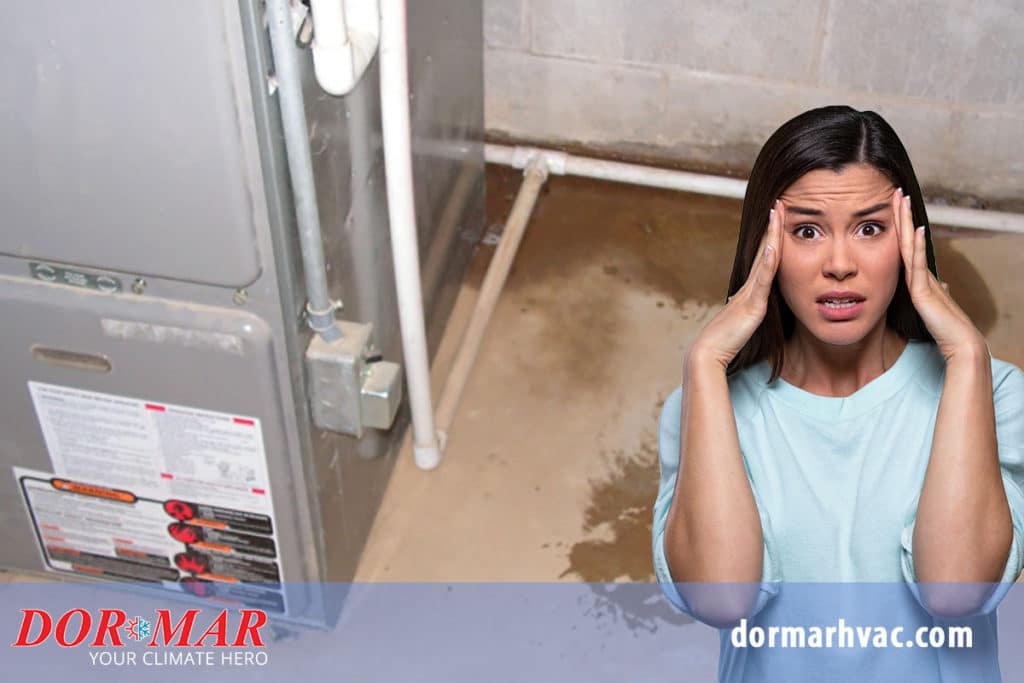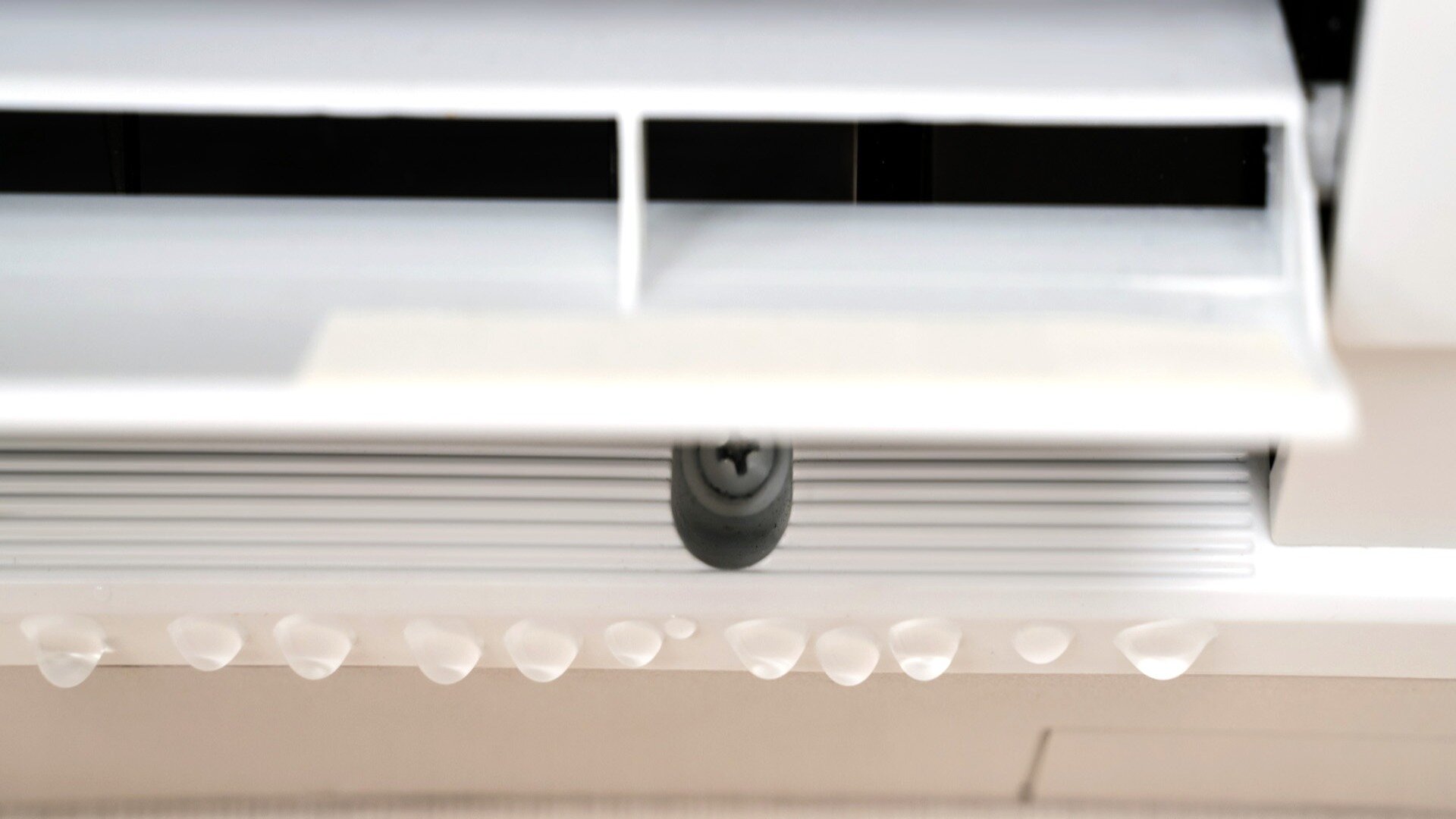Why Is My Air Conditioner Leaking Inside

Discovering a puddle of water near your indoor air conditioning unit is never a welcome sight. It signals something is amiss and requires immediate attention to prevent further damage. Understanding the common causes of an air conditioner leaking inside is crucial for homeowners, real estate investors, and contractors alike. This guide breaks down the potential culprits and provides practical solutions to address the issue.
Common Causes of Air Conditioner Leaks Inside
Several factors can contribute to an indoor AC unit leaking. Identifying the specific cause is the first step toward resolving the problem effectively.
Clogged Condensate Drain Line
This is arguably the most frequent reason for AC leaks. As your air conditioner cools the air, it also removes moisture, which condenses into water. This water is then collected and drained away from your unit. Over time, algae, mold, dust, and other debris can accumulate in the drain line, creating a blockage. When the drain line is clogged, the water backs up and eventually overflows, leading to a leak near the indoor unit. This is especially common in areas with high humidity.
Solution: Locate the condensate drain line (usually a PVC pipe near the indoor unit or outside). You can try to clear the blockage yourself using a wet/dry vacuum to suck out the debris or by flushing the line with a mixture of hot water and vinegar or a commercial drain cleaner specifically designed for AC systems. If the clog is severe or you're uncomfortable performing this task, it's best to call a qualified HVAC technician.
Broken or Disconnected Condensate Pan
The condensate pan sits beneath the evaporator coils and collects the dripping water. If the pan is cracked, rusted, or otherwise damaged, it will leak. Similarly, if the drain line is disconnected from the pan, water will drip directly onto the floor.
Solution: Inspect the condensate pan for any signs of damage. Small cracks might be repairable with a sealant, but severely damaged pans should be replaced. Ensure the drain line is securely connected to the pan. If the pan needs replacing, consider the cost and compare against the lifespan and efficiency of your overall system; it might be the right time to evaluate a system upgrade.
Dirty Air Filter
A dirty air filter restricts airflow over the evaporator coils. This can cause the coils to become excessively cold and even freeze. When the system is turned off, the ice melts, and the excess water can overwhelm the condensate drain pan, leading to a leak.
Solution: Regularly check and replace your air filter as recommended by the manufacturer (typically every 1-3 months, depending on usage and air quality). Using high-efficiency filters can further improve air quality, but be sure they are compatible with your system, as some can restrict airflow even when clean.
Low Refrigerant Levels
Low refrigerant can also cause the evaporator coils to freeze. As with a dirty air filter, the melting ice can lead to an overflow and a subsequent leak. Low refrigerant often indicates a leak in the refrigerant lines, which requires professional attention.
Solution: Do not attempt to add refrigerant yourself. Refrigerant handling requires specialized tools and knowledge. Contact a licensed HVAC technician to diagnose and repair the refrigerant leak and recharge the system to the correct level. Running an AC unit with low refrigerant can cause serious damage to the compressor, leading to costly repairs or even system replacement.
Frozen Evaporator Coils
As mentioned above, several factors can lead to frozen evaporator coils, including dirty air filters, low refrigerant levels, and a malfunctioning blower motor. The melting ice is the direct cause of the leak.
Solution: Address the underlying cause of the frozen coils. Turn off the AC unit and allow the ice to melt completely. Then, inspect and replace the air filter, check for refrigerant leaks, and ensure the blower motor is functioning correctly. If you're unsure about any of these steps, contact a qualified HVAC technician.
Improper Installation
If your air conditioner was recently installed, an improperly sloped condensate drain line or a poorly sealed connection can cause leaks. This is why it’s crucial to use reputable and experienced HVAC installers.
Solution: Contact the installation company to inspect and correct the installation. A reputable company will stand behind their work and rectify any issues promptly. Consider checking their credentials and customer reviews before allowing them to perform any repairs.
HVAC System Maintenance and Prevention
Preventing air conditioner leaks is far easier and more cost-effective than dealing with the aftermath. Regular maintenance is key to ensuring your system operates efficiently and avoids costly repairs.
Regular Air Filter Replacement
As mentioned earlier, changing your air filter regularly is crucial. Set a reminder on your calendar to check and replace the filter every 1-3 months, depending on your usage and air quality.
Annual Professional Maintenance
Schedule an annual maintenance appointment with a qualified HVAC technician. They will inspect and clean the system, check refrigerant levels, test electrical components, and identify any potential problems before they escalate. This typically includes cleaning the evaporator and condenser coils, checking the drain line, and verifying proper airflow.
Condensate Drain Line Cleaning
In addition to professional cleaning, consider flushing the condensate drain line yourself a few times a year. This can help prevent clogs from forming and ensure proper drainage. A simple solution of vinegar and water can be very effective.
Monitor for Unusual Noises or Performance Issues
Pay attention to any unusual noises coming from your AC unit, such as banging, hissing, or rattling. Also, be alert for signs of reduced cooling performance, such as longer run times or inconsistent temperatures. These can indicate underlying problems that need attention.
Choosing the Right HVAC System
When replacing or upgrading your HVAC system, consider factors such as energy efficiency, capacity, and features. Here's a brief comparison of popular brands and models, along with key performance metrics:
Popular Brands
- Carrier: Known for their reliability and advanced features. Models like the Infinity series offer high SEER (Seasonal Energy Efficiency Ratio) ratings and smart home integration.
- Trane: Another reputable brand with a long history of quality. Trane's XV series offers variable-speed compressors for enhanced comfort and energy savings.
- Lennox: Offers a range of models, from budget-friendly to high-end, with options for zoning and advanced filtration.
- Goodman: A more affordable option that still provides reliable performance. Goodman units often come with longer warranties.
- Rheem: A popular choice for both residential and commercial applications. Rheem offers a wide range of products, including heat pumps and ductless mini-split systems.
Key Performance Metrics
- SEER (Seasonal Energy Efficiency Ratio): Measures the cooling efficiency of an air conditioner. The higher the SEER rating, the more efficient the unit. Look for models with SEER ratings of 16 or higher for optimal energy savings.
- AFUE (Annual Fuel Utilization Efficiency): Applies to furnaces and measures their heating efficiency. The higher the AFUE rating, the more efficient the furnace.
- HSPF (Heating Seasonal Performance Factor): Measures the heating efficiency of heat pumps. A higher HSPF rating indicates greater efficiency.
Warranty Considerations
Pay close attention to the warranty offered by the manufacturer. A longer warranty provides greater peace of mind and protects you against potential repair costs. Many manufacturers offer base warranties that can be extended with registration.
Pricing Considerations
The cost of a new HVAC system can vary widely depending on the brand, model, capacity, and installation complexity. Obtain quotes from multiple contractors to compare prices and ensure you're getting a fair deal. Be sure to ask about any available rebates or incentives from your local utility company.
Factors that affect pricing: System type (central AC, heat pump, ductless mini-split), BTU capacity, SEER rating, brand reputation, installation labor costs, ductwork modifications (if needed), and any smart home integration features.
Conclusion
Addressing air conditioner leaks promptly is crucial to prevent further damage to your home and ensure efficient system operation. By understanding the common causes of leaks and implementing a regular maintenance plan, you can keep your HVAC system running smoothly for years to come. When choosing a new system, prioritize energy efficiency, reliability, and a comprehensive warranty to maximize your investment. Remember to always consult with a qualified HVAC professional for diagnosis and repair work, and don't hesitate to get multiple quotes when considering a new system installation. Addressing these issues proactively can save you significant expense and stress in the long run.










